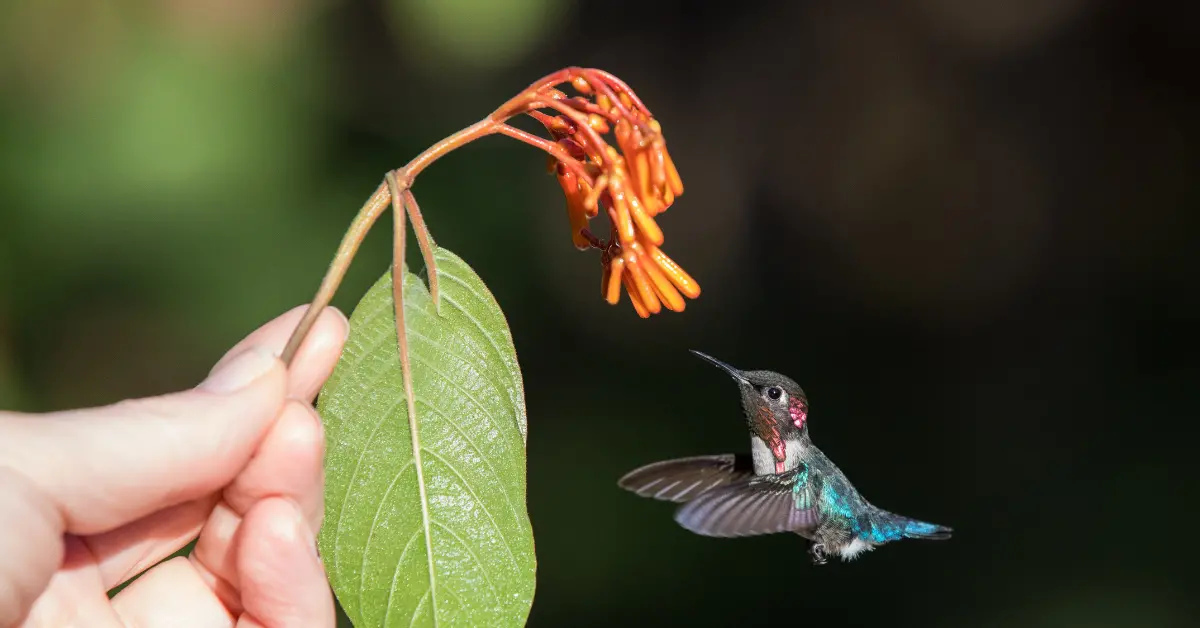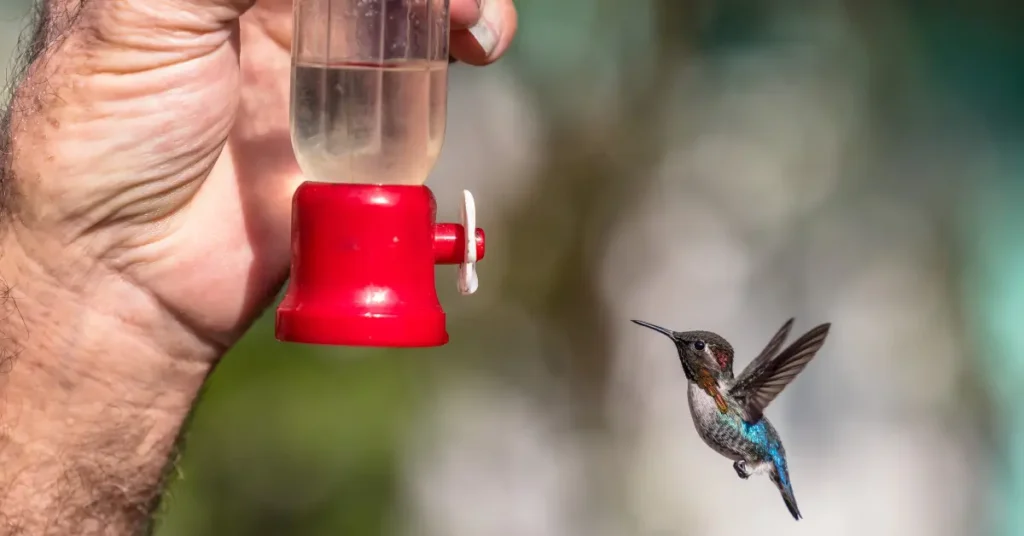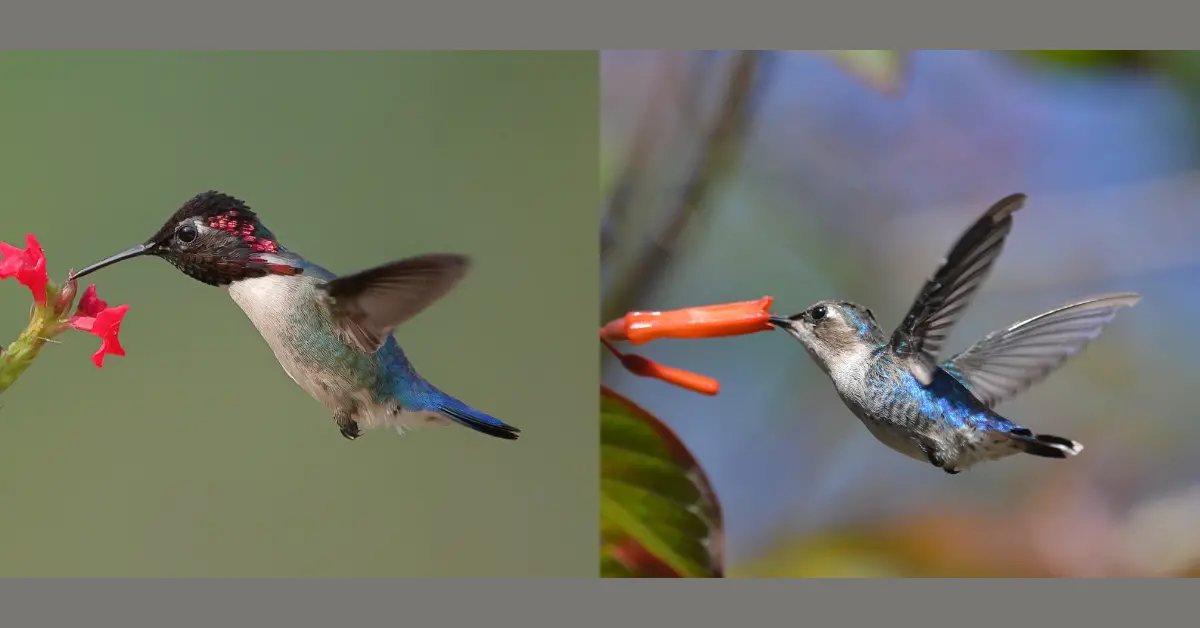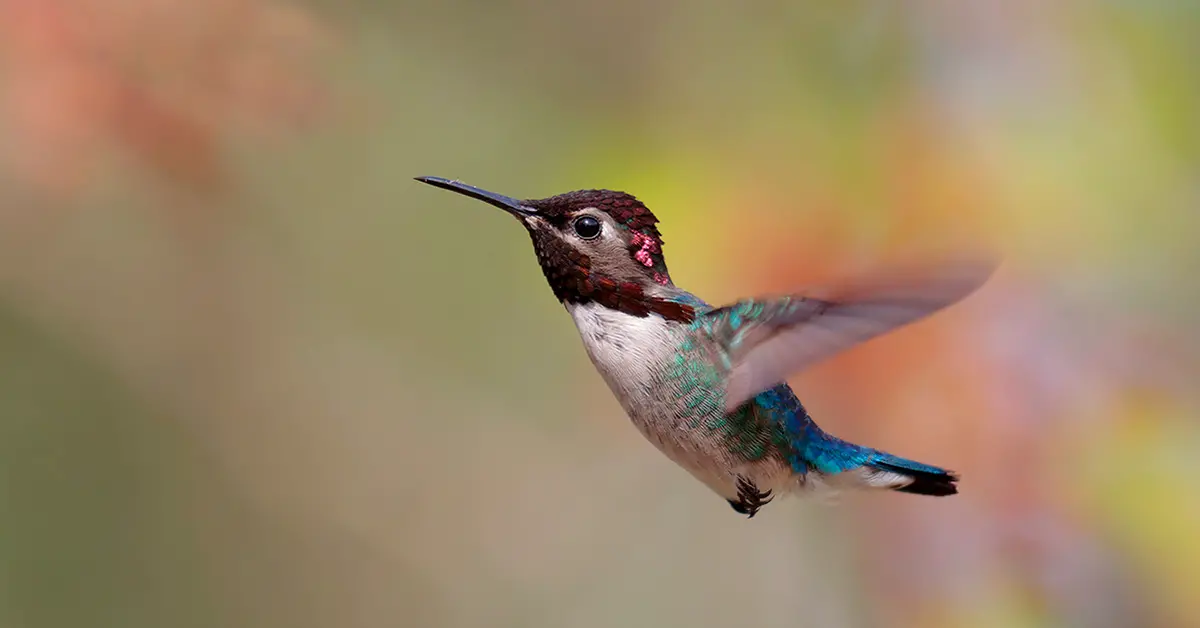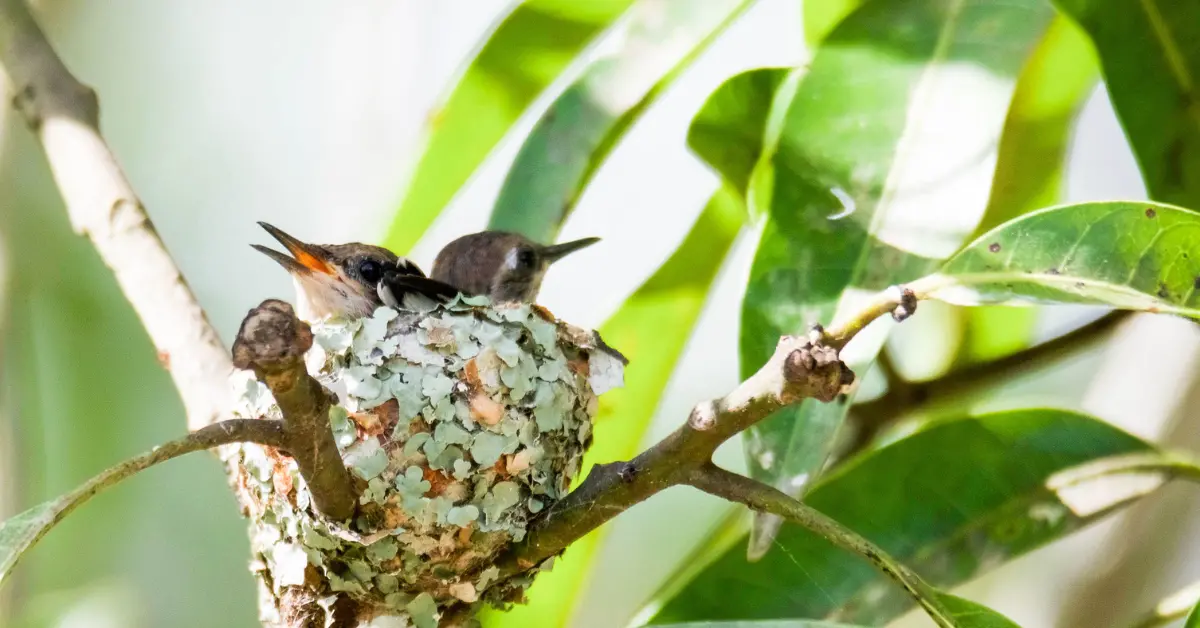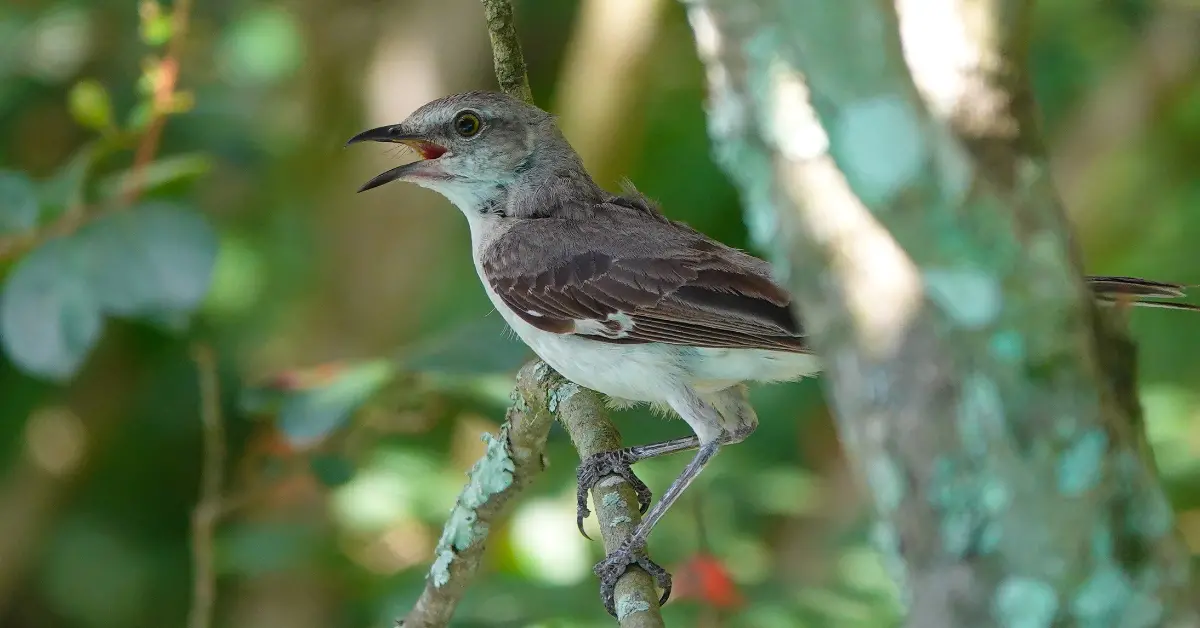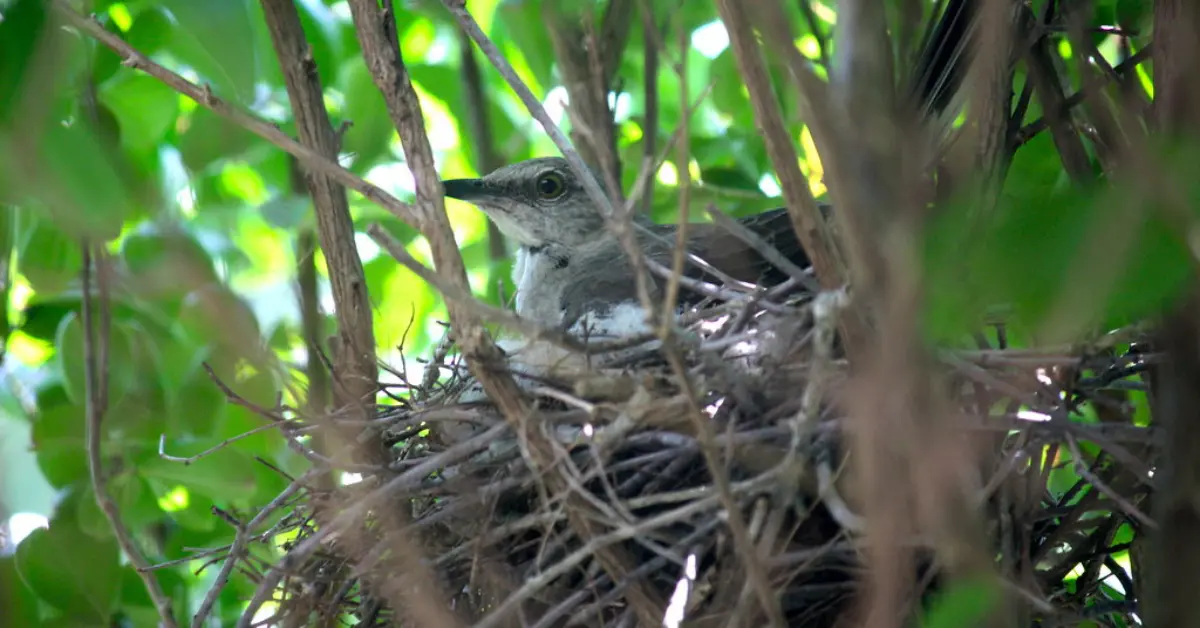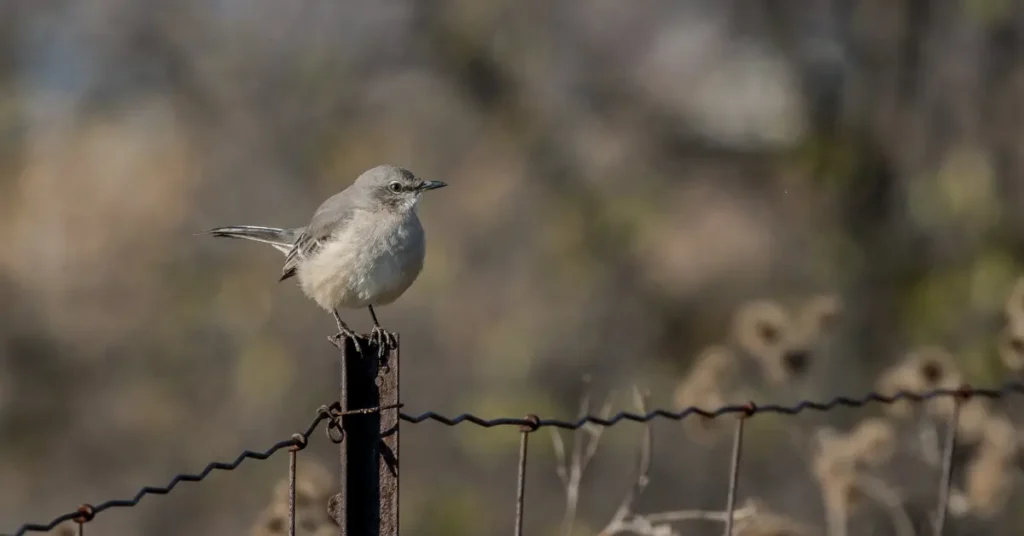The Red-Bellied Woodpecker is a notable species for many reasons. Its vibrant plumage, playful disposition, and chatty tendencies make it an excellent specimen for identification for the beginning birder. Even so, the most advanced of birders still delight in searching the dense woodlands for this special species of woodpecker due to its unique and endearing features and abilities.

Red-Bellied Woodpecker Identification
There are a number of ways to identify the Red-Bellied Woodpecker, and many of them are quite obvious. In this section, we provide a detailed identification guide that is heavily based on sight and sound, while also considering factors such as habitat, flight patterns, and behaviors.
Identifying Red-Bellied Woodpeckers by Sight
Factors to consider when identifying a bird by sight include size, color, and markings. Let’s take a look.

Size
This is a medium-sized bird, similar in height and weight to a robin. It is 9.25 inches in length, moderately plump, and balanced by a sixteen-inch wingspan. Its long bill, which, in tandem with its chisel-like shape, is crucial for its feeding behavior and excavating cavities. This bird has a medium-length, stiff tail that functions like a third leg, stabilizing the woodpecker while it clings vertically to tree trunks.
Color and Markings
The Red-Bellied Woodpecker’s most recognizable feature is the black and white barring on its back and wings. This looks similar to zebra stripes. Its face, throat, and belly are a plain, pale to dusty gray color. Its supposed red belly typically appears to be more of a beige coloration, but up close, one sees that it has a faint pinkish or reddish wash on the lower abdomen.
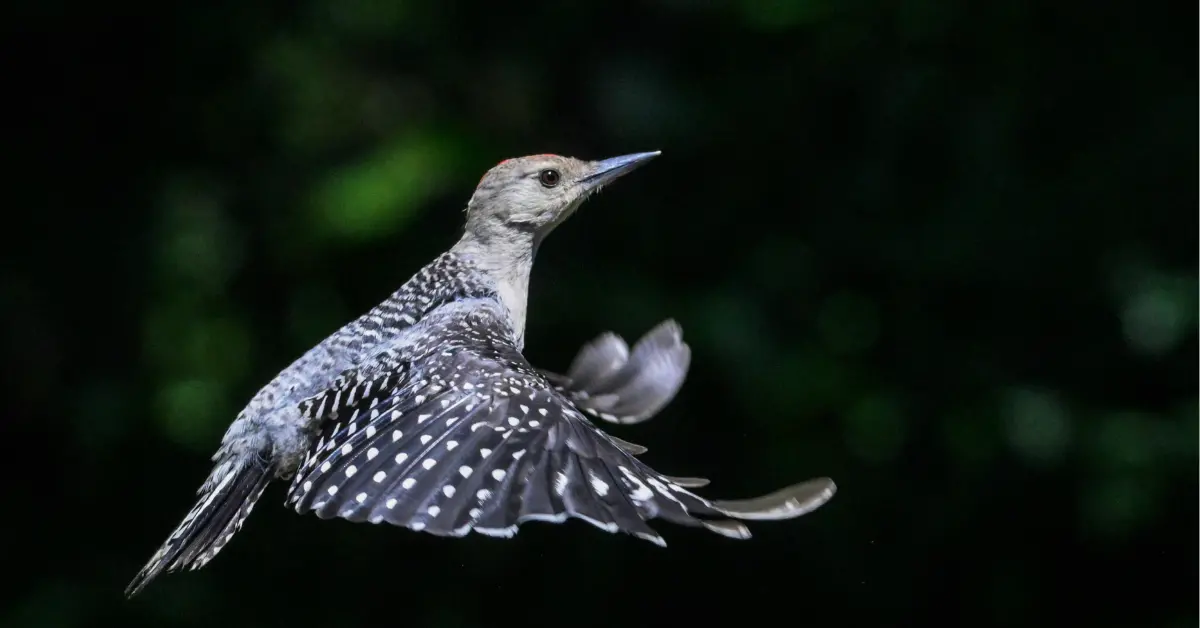
Males, females, and juveniles all have their own distinctive markings. This is especially true in the case of their head patterns. Males have a full, bright, red cap extending from the base of the bill over the crown to the nape of the neck. Females have red only on the nape of the neck. They sometimes also have a small red patch at the base of the bill. They have a gray to brown crown. Juveniles lack red on their head. Instead, their head plumage is dusky or brownish until they mature. Their overall coloration is similar to that of mature Red-Bellied Woodpeckers, but muted.
Differentiating Red-Bellied Woodpeckers from Red-Headed Woodpeckers

These related species are easier to discern from one another than you may assume. For one, the Red-Bellied Woodpecker has a red cap and nape. The Red-Headed Woodpecker has an entirely crimson head. However, the most obvious indicator is their back and wing markings. The Red-Bellied Woodpecker has a barred black and white back, while the Red-Headed Woodpecker has a solid black back and large white wing patches.
Identification by Sound
Most Common Sounds Made by Red-Bellied Woodpeckers
The most common sound made by the Red-Bellied Woodpecker is a loud, rolling ‘churr-churr-churr’ or ‘kwirr-kwirr’. This sound echoes through the woods, making it easy for birders to hear. It also makes contact calls that sound like a gruff, coughing ‘cha-cha-cha’. This is a sound most often exchanged between mates or made when excited.
Drumming Sounds
Drumming is a method of communication and is also used to attract mates. It uses its beak to drum against resonant objects, such as dead trees, hollow limbs, and even artificial structures like metal roofs, utility poles, and box trucks. The drum typically consists of about six sharp taps in a short burst.
Hatchling and Juvenile Red-Bellied Woodpecker Sounds
Just before hatching, the young Red-Bellied Woodpecker lets out a shriek to let the world know it’s coming! Its calling only gets more persistent from then on as it begs mom and dad for food. These begging calls are characterized by a repeated high-pitched tone, best described as a ‘pree-pree-pree’.
Sounds Between Mated Pairs
Mated pairs often exchange soft ‘grr’ calls when near each other. Males tend to call more than females.
Other Methods of Identification
Red-Bellied Woodpeckers’ Preferred Habitat
Habitat is not the most reliable factor when attempting to identify a Red-Bellied Woodpecker, due to its great adaptability and extended range. However, it is still helpful to understand its preferences and where its population is most commonly found. It is typically found in the eastern United States. However, its range now expands as far inland as the wooded areas of the Midwest and as far north as southern Ontario.
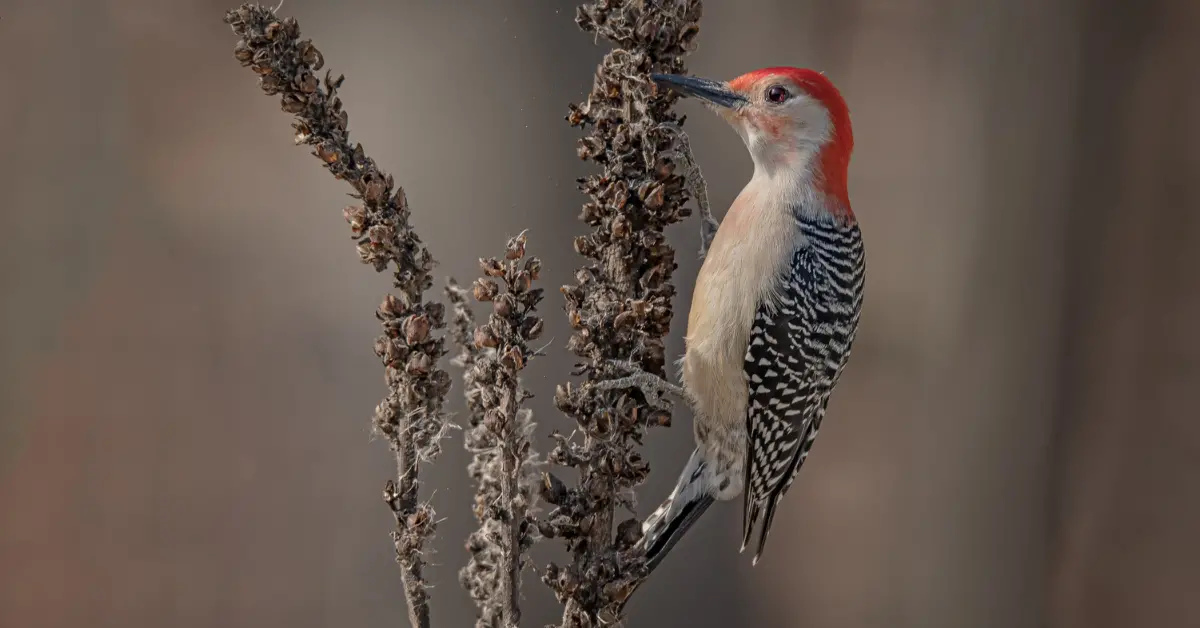
It prefers woodlands with mostly mature hardwood trees, particularly those dominated by oak and hickory trees. It can also thrive in other woodland categories. Its main requirement is the presence of dead trees, also known as snags, or dead limbs on otherwise live trees as they excavate their nesting and roosting cavities in decaying wood. Although they may be found in open forests, suburban parks, or even at backyard feeders, they prefer areas with higher tree and understory density.
Flight Patterns
Red-Bellied Woodpeckers’ flight patterns are described as playful and rollercoaster-like:
- It flaps its wings powerfully in short, rapid bursts to ascend.
- This is followed by a brief period of gliding.
- During the gliding phase, it tucks its wings in, an action called bounding, which causes it to lose speed and altitude slightly before the next burst of flapping lifts it back up.
- The rapid wing beats make its flight appear bouncy or jerky.
It is important to note that short flights between trees or foraging sites may only include a couple of bounds. Flight patterns when fleeing a predator versus playing also differentiate. Play behavior leads to erratic flight, especially among juveniles. When playing, it moves quickly through the forest, abruptly changing direction and making enthusiastic chattering calls. On the other hand, it can fly high, fast, and in a direct line of flight when under chase by predators.
Its take-off and landing methods help birders confirm their identification as well:
- It launches from a perch with a brief initial descent before beginning the undulating pattern.
- It typically concludes with a final glide followed by a rapid upward movement to land on a tree trunk or branch, where it immediately adopts its characteristic upright posture.
Behavior
This species of woodpecker is most often found clinging to tree trunks and main branches. While it primarily eats from tree bark (watch for bark picking!), it may also be seen consuming nuts, fruits, and seeds, or occasionally catching insects in flight. This diverse diet is a good way to differentiate the Red-Bellied Woodpecker from other related woodpeckers.
Another common behavior that is not consistent in other woodpecker species is food caching:
This involves wedging nuts into bark crevices and using its bill to break them into smaller pieces. It also stores food in various cracks and holes for later use.
Red-Bellied Woodpecker Interesting Facts
We couldn’t write an article about Red-Bellied Woodpeckers without sharing a few interesting facts about this spectacular bird species!

Population Size of Red-Bellied Woodpeckers
It is estimated that there are roughly sixteen million mature Red-Bellied Woodpeckers! The population size is considered stable, if not increasing, making it a least-concern bird by the IUCN.
Unique Courtship Behavior
Courtship rituals among birds are always a favorite trait to research, as they vary vastly among species and seldom disappoint in terms of intrigue.
For this species, males find several potential nesting sites and excavate a starter hole. They then perform soft, rhythmic tapping from inside or around the cavity entrance. If the female approves of the male specimen and the sight he has selected, she perches beside him and begins tapping in synchrony.
Interesting Physical Features
An Unimaginable Tongue
The most interesting physical feature of the Red-Bellied Woodpecker is its weird tongue:
It is incredibly long.
When retracted, it wraps around the back of the skull and coils around the right eye socket inside the head. This creates a spring-like mechanism that allows it to extend its tongue up to two inches beyond the end of its beak.
But wait, there’s more.
The tip of its tongue is hard, pointed, and equipped with backwards-facing barbs that act like a spear when hunting insects. The tongue is additionally coated with sticky saliva, which helps it latch onto insects and retrieve them from cavities in the bark.
Shock-Absorbing System
The Red-Bellied Woodpecker’s anatomical structure must protect its brain from the incredible force generated while pecking, which is up to 1,000 times the force of gravity.
It has a shock-absorbing system that offsets this force, comprising the bill, skull, and its muscular and bone arrangement:
- The bill is made of a strong keratin that is harder toward the tip and softer toward the base, which helps to dissipate energy.
- The skull tightly holds the brain in a cavity with very little cerebrospinal fluid, reducing the chance of the brain sloshing around and hitting the inside of the skull upon impact.
- Finally, the muscles in the neck and the bone structure at the base of the bill redirect the shock from the impact to go around the braincase instead of directly through it.
Zygodactyl Feet
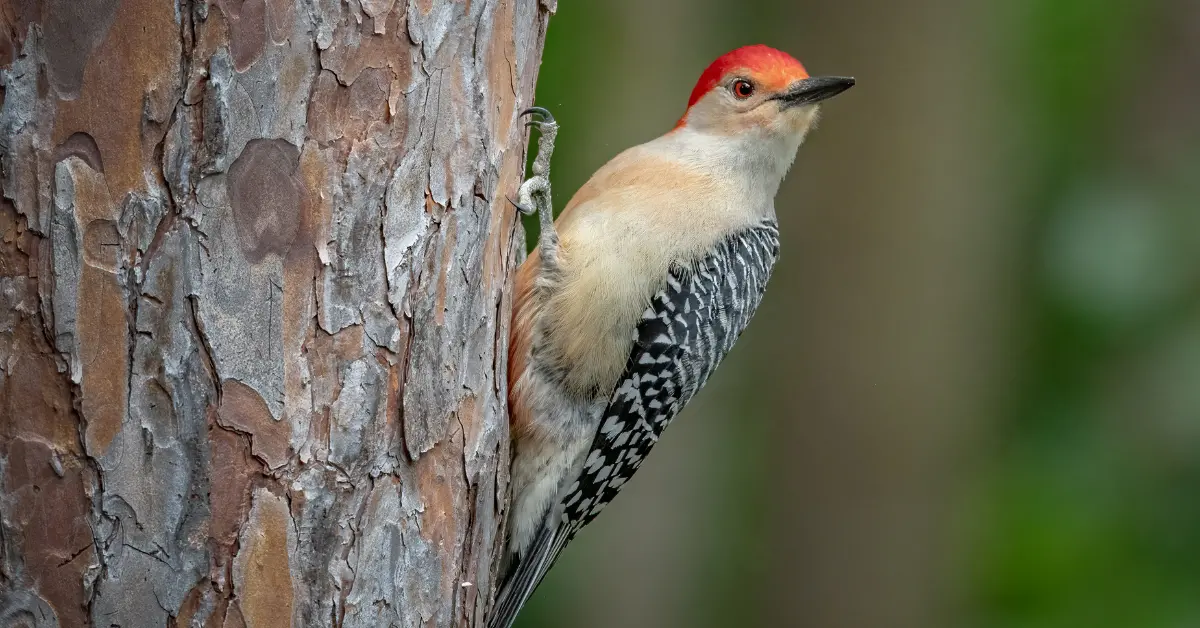
Woodpeckers (and parrots) have zygodactyl feet. This essentially is a specific arrangement of the toes that allows the bird to climb and cling vertically to tree trunks. Most birds have three toes pointed forward and one toe pointed backward.
Birds with zygodactyl feet have two toes pointed forward and two toes pointed backward.
This leads to a vice-like grip on vertical surfaces. Zygodactyl feet provide the woodpeckers with so much stability that they can even lean backward to gain momentum and increase the force of their peck.
Adaptable, vocal, and vibrant in appearance, the Red-Bellied Woodpecker is a treat to come upon on a birding adventure. Before heading to the woods, check out our guide to Types of Woodpeckers in North America so you can identify them all!

